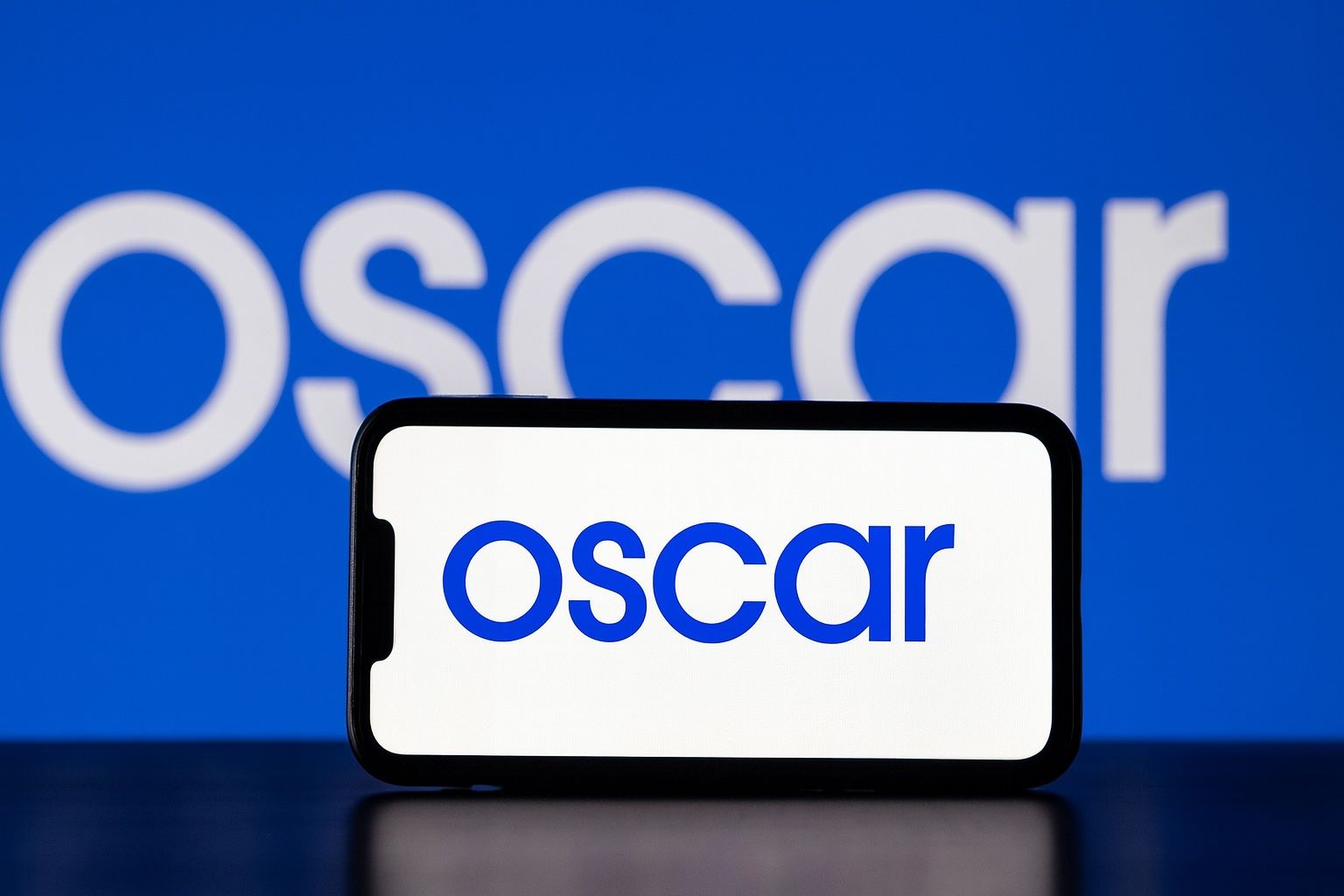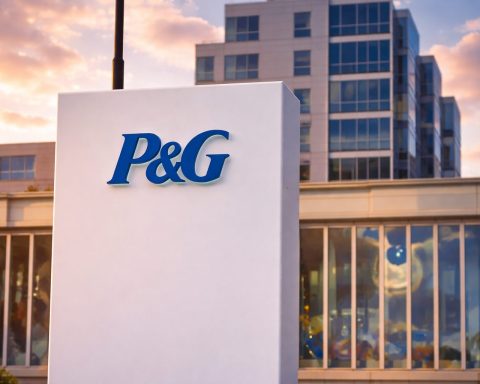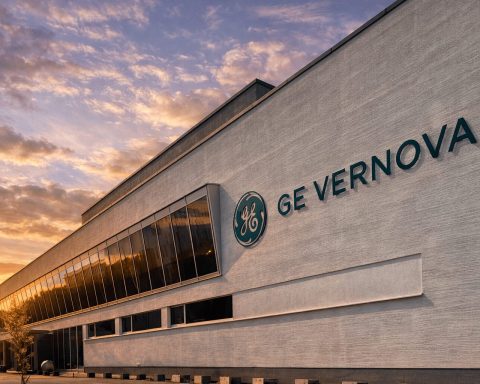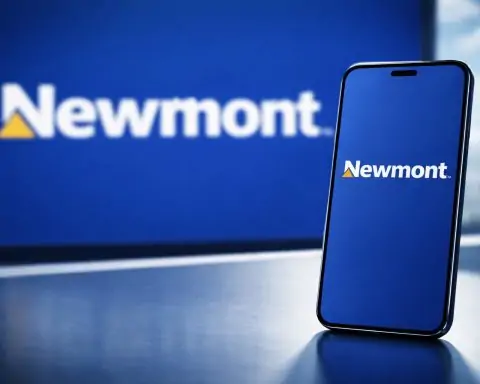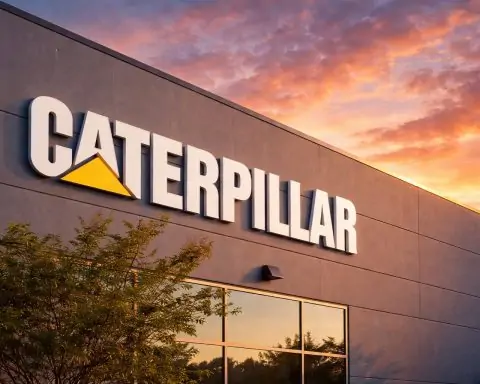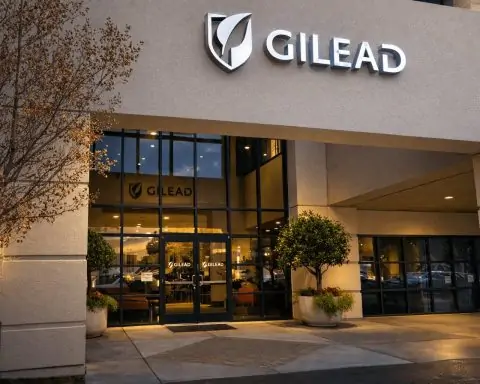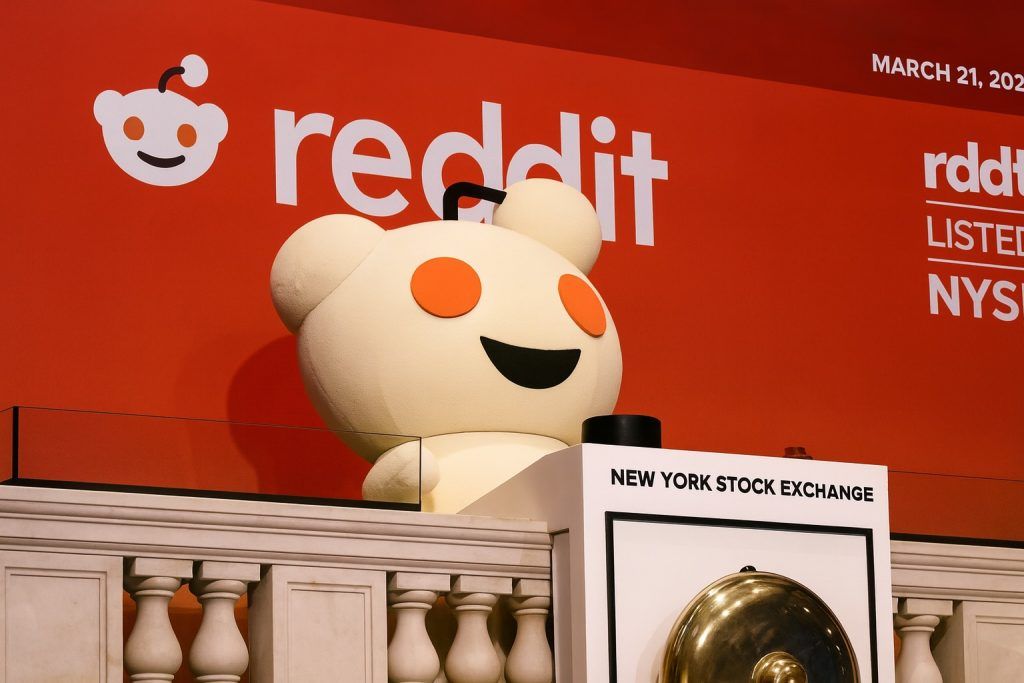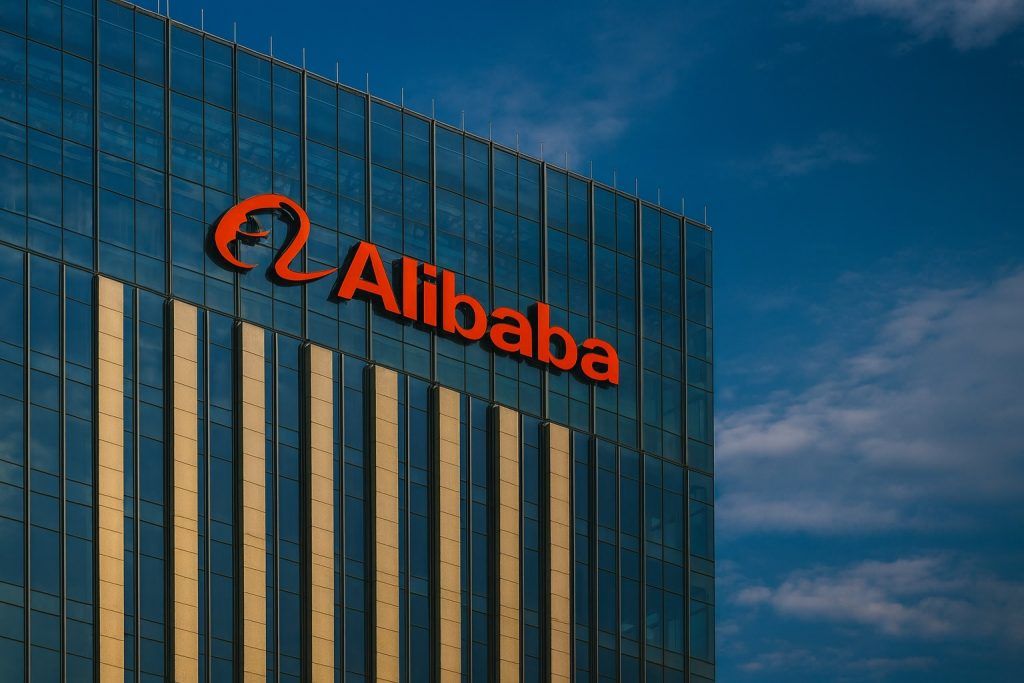Key Facts: – Oscar Health (NYSE: OSCR) shares have surged in early October 2025, recently trading around $21–22 (up ~40% YTD) [1] [2]. The stock hit about $21.50 on Oct 3 (+11% on the day) and was trading near $21.76 on Oct 14 (+6.7%) [3] [4]. – Oscar announced a $410 million convertible debt offering in September 2025 to fund AI-driven technology and growth initiatives [5]. Proceeds will back “strategic initiatives focused on AI” and expansion of member services [6] [7]. – The company also forged a major partnership with Midwestern grocer Hy‑Vee: launching “Hy‑Vee Health with Oscar”, an employer health plan in Iowa. CEO Mark Bertolini quipped coverage should be “as easy as buying milk at Hy‑Vee” [8] [9]. – In Q2 2025 Oscar’s revenue jumped ~28–30% YoY to about $2.86–2.9 billion, but losses widened: a $228 million net loss (≈–$0.89 EPS) on a high 91.1% medical-loss ratio [10] [11]. Full‑year 2025 revenue guidance was raised to ~$12.0–12.2 B (from ~$11.3 B earlier) with an expected operating loss of $200–300 M, as Oscar adjusts pricing for higher claim costs [12] [13]. – Wall Street remains cautious. No analysts rate OSCR a “Buy” – the consensus is “Strong Sell” (5 sell, 4 hold) with an average 12‑month price target of only ~$12 [14] [15] (roughly 40–45% below current levels). Major firms like UBS, Wells Fargo and Barclays have set low targets ($10–17) and warned of ACA market headwinds [16] [17]. – Policy tailwinds are in play: a Reuters/KFF poll (Oct 3) found 78% of Americans want ACA premium tax credits extended (they expire year-end) [18]. This news lifted many insurer stocks (UnitedHealth +3%, Humana +8.8%, Centene +4.4% on Oct 3) [19]. Oscar’s core ACA market would similarly benefit if subsidies continue, but analysts caution that any lapse (or other regulatory shock) could sharply raise premiums and enrollment risk [20] [21].
Stock Rally and Recent Price Action
Oscar Health’s stock has rallied strongly in October. On Oct 3, 2025 OSCR closed around $21.50, roughly an 11% jump from the prior day [22]. By mid-month, Oscar was trading in the $21–22 range, up about 6–7% on Oct 14 alone [23]. Over the past week (mid-Oct), the stock was up roughly 8%, far outpacing broader insurance indices [24]. In context, OSCR started 2025 well below $15 and has climbed ~30–40% from its 2024 lows [25] [26].
Technical indicators turned bullish: as of mid-October the stock trades above its key moving averages (50‑day SMA ≈$18.0, 200‑day SMA ≈$16.0) [27]. Trading volume has been light relative to the rally, but market data trackers note heightened retail and social-media interest in Oscar. For example, one report flagged a 700% surge in StockTwits chatter in late Sep [28]. Still, most Wall Street targets remain far below current levels; Fintel notes an average one-year price target near $12–13 [29] [30], suggesting the rally is largely driven by company-specific news and optimism rather than fundamental upgrades.
Growth Initiatives & Fundraising
Oscar’s stock strength has been tied to big capital raises and expansion plans. In mid-September 2025, Oscar launched a $350 million convertible note offering (2.25% due 2030) with an overallotment option, effectively upsizing the deal to about $410 million [31]. The net proceeds (~$395.8M) are earmarked for “general corporate purposes, including to support future expansion fueled by strategic initiatives focused on AI” [32] [33]. In plain terms, Oscar is betting these funds will allow it to invest in technology (data, AI underwriting, digital platforms) that can lower costs and improve service. The deal includes a capped call to limit dilution (strike ≈$37.46, a 100% premium) [34].
Alongside the financing, Oscar has broadened its product reach. Notably, it teamed up with Hy‑Vee (a leading grocery chain) to offer a new employer-sponsored health plan. Launching in Iowa for Jan 1, 2026 coverage, “Hy‑Vee Health with Oscar” ties Oscar’s ACA-based insurance to Hy‑Vee’s clinics and pharmacies [35]. Oscar’s CEO Mark Bertolini explained the move: “Finding the right healthcare coverage should be as easy as buying milk at Hy‑Vee,” emphasizing that the plan will give employees concierge care at a fixed, affordable cost [36] [37]. The partnership aims to expand Oscar’s membership beyond direct ACA signups into the employer market (via ICHRA arrangements) [38] [39].
Management highlights these strategies as part of a longer-term push. Oscar’s leadership has repeatedly stressed that tech and scale are key to driving future profitability. For example, at a September industry conference Bertolini said Oscar sees “long-term upside” in the individual (ACA) market and believes the company can “manage through [market] resets” on the path back to profit by 2026 [40]. In July (after revising guidance), he similarly noted Oscar would take “appropriate pricing actions for 2026” and that “Oscar has successfully navigated dynamic markets before” [41]. These comments underscore Oscar’s thesis that despite near-term losses, its full-stack tech platform and pricing adjustments will eventually pay off.
Analyst & Expert Views
Despite the company’s optimism, analysts remain skeptical. Institutional research shows no current “buy” ratings on OSCR. As of mid-October, the consensus across 9 covering analysts was “Strong Sell” [42]. (One data provider confirms 5 sell and 4 hold recommendations, and an average 12‑month price target of only ~$12 [43].) Major brokerages have slashed forecasts: for example, UBS and Wells Fargo now rate Oscar at Sell/Underweight (target $10–11) and Barclays initiated at Underweight ($17) [44]. These analysts cite Oscar’s razor-thin margins, very high medical-loss ratio, and ACA market risks as key concerns.
“Oscar’s 2025 pricing does not appear adequate to cover cost trends,” warned a Wells Fargo analyst, noting that the expiration of subsidies in 2026 could “produce unprecedented disenrollment, risk pool degradation and rate/trend volatility” [45]. Barclays has echoed this view, cautioning that health insurers can enter a self-reinforcing “insurance spiral” if rising premiums drive healthier enrollees out of the pool [46]. On the upside, some commentators point out Oscar’s low price/sales (≈0.46x) relative to high-growth peers, implying the stock still has room if Oscar meets its projections. For now, however, investors appear more bullish than analysts: the shares trade far above those target prices, reflecting optimism about Oscar’s tech-driven model and the recent capital infusion [47].
Oscar’s own executives project that break-even is on the horizon in a few years. The company’s investor-day slides target ~$2.25 EPS by 2027 (driven by margin expansion) [48]. Analysts’ models roughly align: consensus forecasts expect Oscar to finally turn profitable around 2026–27. In the near term, Wall Street expects another strong top-line report but more red ink. Consensus estimates call for Q3 2025 revenue around $3.1 billion (≈+28% YoY) with negative earnings (EPS roughly –$0.55) [49]. All eyes will be on the Nov 6 quarterly results and the Q&A – investors will judge if Oscar’s growth and AI investments can outpace its rising costs.
Outlook: Sector Context and Comparisons
Oscar operates in the highly turbulent ACA insurance market. Broadly speaking, many U.S. insurers are grappling with similar issues. A Reuters/KFF poll shows around 78% of Americans support renewing ACA subsidies set to expire this winter [50] – a politically powerful tailwind. Indeed, on Oct 3 shares of major carriers jumped (UnitedHealth +3%, Humana +8.8%, Centene +4.4%) when it became clear subsidies were likely extended [51]. Extending those premium tax credits would directly benefit Oscar’s individual-market customers by keeping premiums lower. Conversely, if subsidies do lapse, insurers warn premiums could “more than double” and many customers might drop coverage [52] – a scenario analysts fear for Oscar’s enrollment and economics.
Comparing peers highlights Oscar’s unique position. It is still small in scale: its ~$5 billion market cap lags the tens-of-billions of revenue enjoyed by legacy giants (UnitedHealth, Elevance (Anthem), Humana, etc.). Oscar’s Q2 medical-loss ratio (~91%) was higher than peers like Centene’s ACA book (~85–90%) [53], reflecting its relatively unseasoned underwriting. As TS2.Tech observes, “smaller peers have struggled” in this niche – for example, Medicare Advantage startup Clover Health (NASDAQ: CLOV) saw its stock collapse amid its own risk-adjustment shortfalls [54]. Oscar is betting that its tech edge (e.g. data analytics, digital service) and new products (Medicare Advantage and employer plans) can set it apart. But for now the market treats it more like a high-growth startup than a defensive insurer.
In summary, Oscar Health’s stock is on a tear, driven by aggressive growth initiatives and hope for favorable health policy. Investors have cheered the $410M funding round and high-profile partnerships, and political signals on ACA subsidies are boosting sentiment. On the other hand, experts warn that Oscar still faces a tough path: its recent losses and high claim costs are well-known, and most analysts see significant downside if the ACA market weakens. As CEO Mark Bertolini notes, Oscar is “committed to our long-term strategy” of tackling the ACA market with technology [55]. Whether that strategy succeeds in returning the company to profitability (as advertised for 2026–27) will be the key question for OSCR investors in the months ahead.
Sources: Company filings and press releases [56] [57]; exchange data and market analytics [58] [59]; financial news and analyst reports [60] [61] [62]. (Quotes are taken from cited materials.)
References
1. ts2.tech, 2. www.marketbeat.com, 3. ts2.tech, 4. www.marketbeat.com, 5. ts2.tech, 6. www.businesswire.com, 7. ts2.tech, 8. ts2.tech, 9. www.businesswire.com, 10. ts2.tech, 11. ts2.tech, 12. ts2.tech, 13. ts2.tech, 14. ts2.tech, 15. ts2.tech, 16. ts2.tech, 17. ts2.tech, 18. www.reuters.com, 19. www.reuters.com, 20. www.reuters.com, 21. ts2.tech, 22. ts2.tech, 23. www.marketbeat.com, 24. ts2.tech, 25. ts2.tech, 26. ts2.tech, 27. www.marketbeat.com, 28. ts2.tech, 29. www.nasdaq.com, 30. ts2.tech, 31. ts2.tech, 32. www.businesswire.com, 33. ts2.tech, 34. www.businesswire.com, 35. ts2.tech, 36. ts2.tech, 37. www.businesswire.com, 38. ts2.tech, 39. ts2.tech, 40. ts2.tech, 41. www.investing.com, 42. ts2.tech, 43. ts2.tech, 44. ts2.tech, 45. ts2.tech, 46. ts2.tech, 47. ts2.tech, 48. ts2.tech, 49. ts2.tech, 50. www.reuters.com, 51. www.reuters.com, 52. www.reuters.com, 53. ts2.tech, 54. ts2.tech, 55. www.investing.com, 56. www.businesswire.com, 57. ts2.tech, 58. ts2.tech, 59. www.marketbeat.com, 60. ts2.tech, 61. ts2.tech, 62. www.reuters.com
